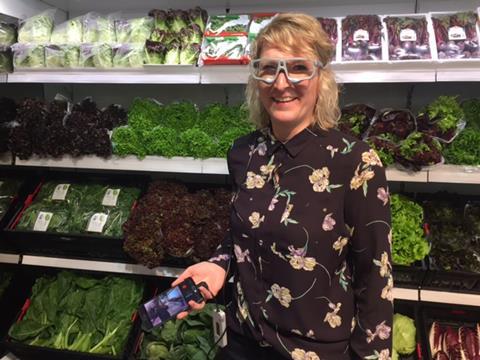
We’ve all heard of ‘try before you buy’, but ‘try before you sell’ is still quite a new concept in fresh produce. At the beginning of April, Dutch breeding company Rijk Zwaan opened the world’s first ‘retail experience’ centre for vegetables to provide retailers and plant breeders with insights on consumer shopping behaviour – before they try out new concepts, products, fixture layouts and displays in store.
“In many other industries producers and manufacturers are doing this kind of research but in fruit and veg I can’t think of a similar facility to this,” says Rijk Zwaan’s manager for chain and retail Jan Doldersum. “People are perhaps reluctant to invest in this kind of research technology because it’s not very tangible for tomorrow and, to some extent, fruit and veg is a day-to-day business. But as a breeding company we need to look maybe five to 10 years down the line.”
Research methods at the mocked-up supermarket in Berlin will include eye tracking – to find out what catches a shopper’s eye the most; assortment planning – to work out the best combination of products to display; and on-shelf positioning – to determine how product layout affects consumer choice.
Tests will also be done to gauge the impact of different packaging, labelling and point-of-sale marketing features, such as cooking demo videos that can be projected on the wall behind a fixture. The retail centre has an extensive range of vegetable products, with various fixture layouts.
Trial shoppers from different age groups and demographics will be invited to the experience centre for a combination of guided test shopping, followed by on-the-spot in-depth interviews and focus group discussions to find out the motivations for their behaviour. The breeder will use this qualitative research to gain detailed insights into new or existing concepts and products.
The most futuristic and exciting research tool at the centre is the eye-tracking glasses – worth €25,000 (£21,000) for a single pair – which test shoppers will be asked to wear when completing a designated shopping task, such as buying ingredients for a mixed salad. The glasses, which have infrared cameras mounted in the frame of each lens, will then be used to map their eye movements and how many milliseconds they look at each product for.
Although eye-tracking glasses have been used in other areas of retail for several years, it seems this is the first time they will be used in vegetable shopping research. Surveillance cameras have also been installed in the retail centre to monitor shoppers’ movements and record how they interact with different products and fixtures.
In addition, sensory research will be carried out to gather feedback on the texture, flavour and smell of different products, comparing retailer expectations of a product to their real-life experience. Shelf life will also be tested to find out more about how products develop over time under realistic retail environment conditions.
“The most important thing the new retail centre will offer the supply chain is better consumer insights on point of sale,” says Doldersum. “In fresh produce there are hardly any insights on shoppers’ path of purchase and their motivation for buying. By combining eye tracking and cameras with follow-up interviews we can get a much better idea of consumer behaviour. If people are just being interviewed, they might give socially acceptable answers, but here we can literally see how they act.”
Rather than sharing research findings with the industry as a whole, Rijk Zwaan will work with retailers on an individual basis to answer specific research questions. The findings will also help the Dutch plant breeder develop varieties and concepts aligned to market demand.
Fixture layouts in the retail centre will match fruit and vegetable displays in different countries and markets. One section imitates a convenience store with products behind glass doors; another follows the Aldi and Lidl model of displaying fresh produce in crates at waist height and eye level; and the third area matches the British and American preference for using taller, more angled shelf displays.



